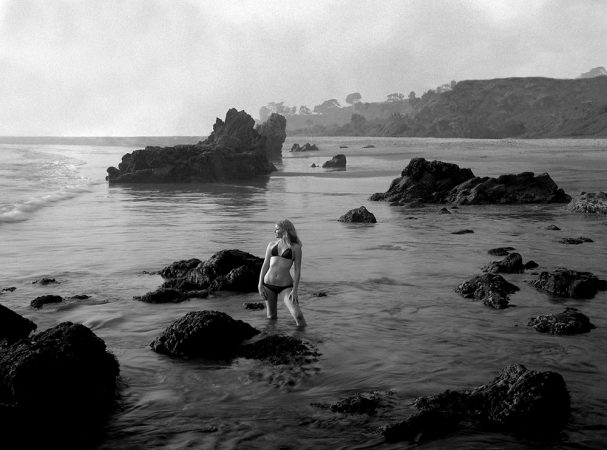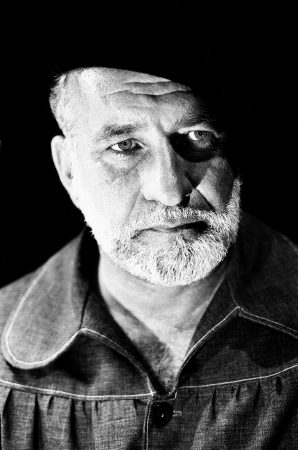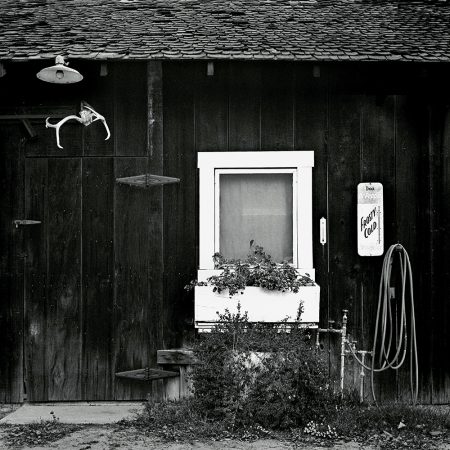Year: 2014
October 10, 2014
Stone Jetty No 6, Maalaea Harbor
I’ll be spending the next two weeks in Bandon, Oregon for my annual retreat.
This is a sacred time for me. It’s a chance to be completely alone, with no distractions and only one thing to think about: creating images.
At first it always takes a couple of days before I begin seeing, and often I’ll worry about the process and why it isn’t coming along. But then it comes…as it always does.
As I prepare to depart for Bandon I’m wondering if I’m finished with my Monolith series which I’ve been working on there for the last several years, or if I’m ready to move onto a new idea. I’ll find out soon enough as I walk those beaches and see if something else catches my eye.
In the past I’d need to go on these trips with a plan and preconceived ideas of what I’d be working on. Now I simply go and trust that I’ll see something and if I’m meant to go in a new direction…then I’ll be carried away with excitement and inspiration.
As I look at my portfolios, that is how it has always happened: spontaneously and through a sudden burst of inspiration.
It’s taken me a long time to learn to trust in the creative process and to realize that it cannot be manipulated or rushed.
Cole
October 5, 2014
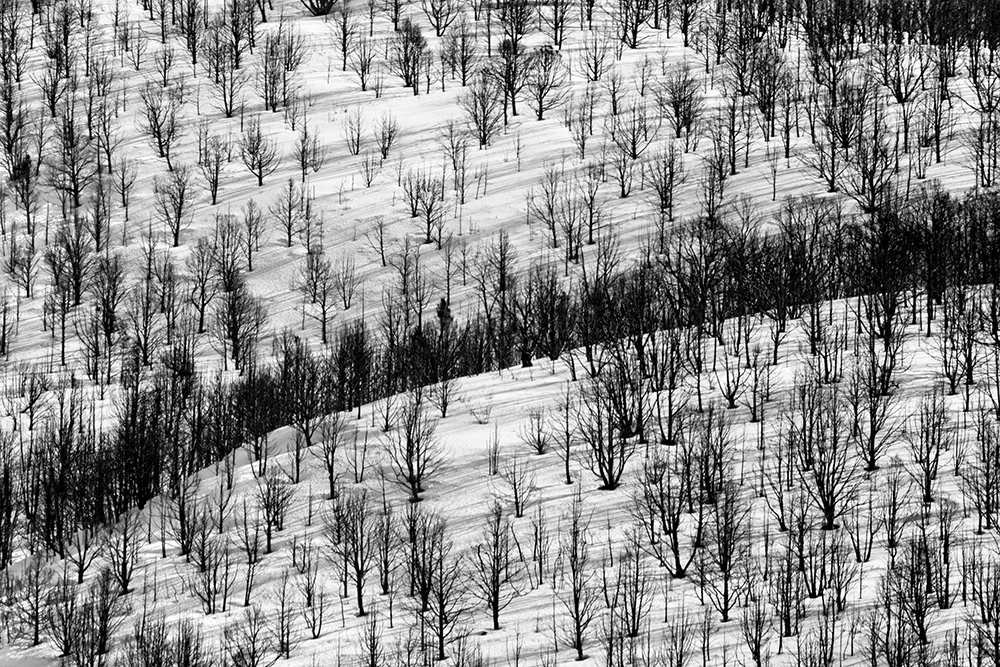
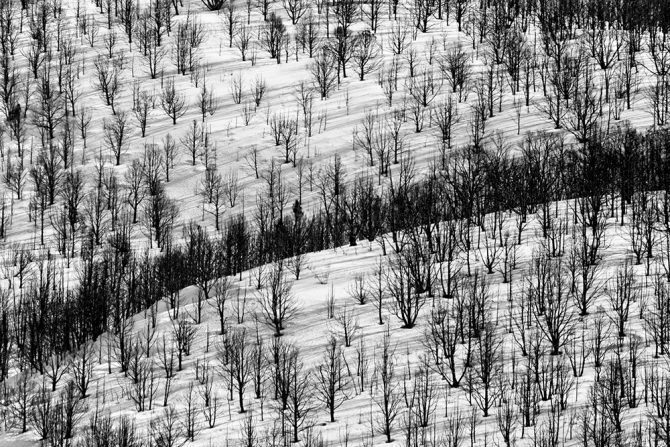
Low Sun on Trees
www.ColeThompsonPhotography.com
September 18, 2014

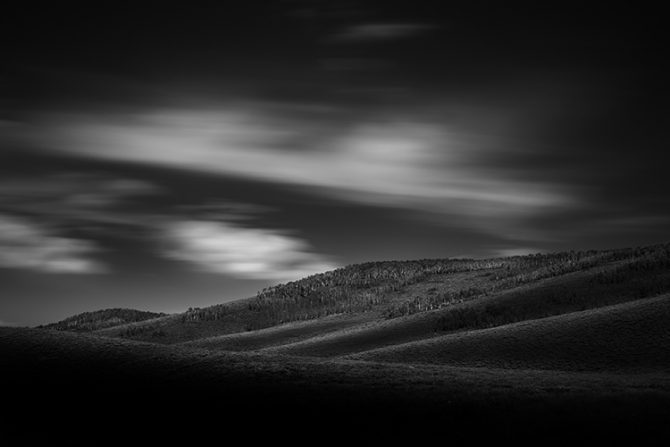 Utah Hills, Created with the Singh-Ray 15 Stop Fixed ND Filter
Utah Hills, Created with the Singh-Ray 15 Stop Fixed ND FilterAfter years of experimentation and trying various ND filter combinations, I have assembled what I believe to be the worlds perfect ND kit. It consists of the following:
5 stop fixed ND filter in 82mm
10 stop fixed ND filter in 82mm
15 stop fixed ND filter in 82mm
20 stop fixed ND filter in 82mm
Singh-Ray Vari-ND in 82mm
Step up rings on each of my lenses so they all can use 82mm filters
Those of you who are shooting long daytime exposures will appreciate what this means. I can now shoot with 5, 10, 15 or 20 stops of ND without stacking two filters together or vignetting!
I am in pig heaven. Seriously.
But my perfect kit would not be complete without a Singh-Ray Vari-ND filter. This is a variable filter that gives you between 3 and 8 stops of neutral density and it works just like a polarizer: turning it one way gives you more ND and turning it the other way gives you less.
It is critically important for me to have this variable filter because it allows me to photograph dynamic subjects (eg: people or other moving objects) quickly without removing the filter to compose the image.
With fixed filters the viewfinder is so dark that I cannot compose without removing the filter. And taking filters on and off takes precious time (which I may not have when photographing people) and sometimes I accidently change the zoom or focus settings, which ruins the shot.
With the Vari-ND I can dial the filter open, compose, and then close the filter down to shoot. I can do this very quickly which is critical.
The Vari-ND filter is the one piece of equipment that allowed me to photograph the ghosts at Auschwitz-Birkenau.

If had I visited the camps armed only with my fixed ND filters, I could not have created these images.
Now some of you looking at this list of filters might be thinking: everyone has heard of a 5 and 10 stop…but a 15 and 20???
Yes! Singh-Ray offers a 5, 10 and 15 stop filter and then they built a 20 stop filter for me (which I think they’ll be offering to the public before long).
Why would I want a 20 stop filter? Because it allows me to get an 8 and 16 minute exposure in bright daylight, and now I don’t have to stack to get it! Stacking creates some serious vignetting when shooting wide, here’s a before-and-after of a two stacked filter shot to illustrate:
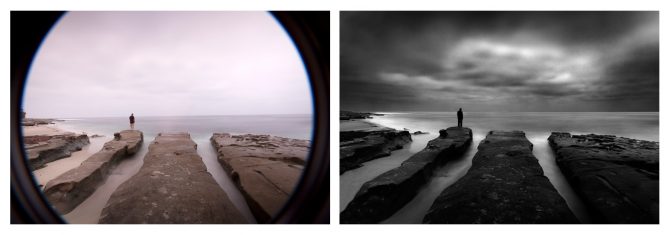
Being able to go from 5 to 20 stops without stacking is a huge deal for me.
I hope this doesn’t sound like a commercial for Singh-Ray because it’s not, but it is an honest plug. I’ve long depended on Singh-Ray’s filters, they are top quality and the customer service is unbeatable.
So if you’re wondering what ND filters to buy, here is the perfect combination of filters to aspire to.
Cole
P.S. Just to balance out all this technical talk, here is a favorite story of mine that puts equipment into perspective:
“A photographer went to a socialite party in New York. As he entered the front door, the host said ‘I love your pictures – they’re wonderful; you must have a fantastic camera.’ He said nothing until dinner was finished, then: ‘That was a wonderful dinner; you must have a terrific Stove.’” Sam HaskinsSeptember 5, 2014


What if you had two choices as a photographer:
To imitate the style of others, have it sell well and achieve notoriety
or
Produce original work that you love, but it results in few sales and does not receive critical praise
Which would you choose…and why?
I think that how we answer this question reveals something about why we create. For a very long time I created to please others, to gain recognition and notoriety.
Because I was trying to please everyone, my work was all over the place. It seemed that every month I was pursuing some new technique, process or fad that I had seen in a photography magazine. And if an image received praise, then I was off in that direction until another compliment took me in another direction.
I was like the wheat in the field, blown to and fro by every wind. In a very real sense my work was not my own, it was imitative, and creatively…well it wasn’t.
Here’s another question that was once posed to me:
If you could choose between having your work sell for thousands of dollars
or
Having your work in thousands of homes
Which would you choose?
There is no right or wrong answer to these questions, but knowing what you want is essential to defining success for yourself.
For many years I never questioned what success meant to me, I just assumed that it was selling my work for high prices, exhibiting, being represented in big name galleries and publishing books.
It wasn’t until I started achieving some of that success that I realized that it wasn’t very fulfilling. It was a transitory pleasure that felt great in the moment but afterwards left me feeling empty. It was like an addiction; I needed more and more of the spotlight to maintain that feeling and yet it was becoming less and less satisfying.
Eventually I realized this formula wasn’t working for me and I finally stopped to ask myself “what do I want?” and “what will bring me lasting satisfaction” and “what do I consider success?”
Answering those questions has changed everything that I do, it was a life changer that affected much more than my photography.
I wish I would have asked myself these questions earlier in life, but I’m just grateful that I did eventually ask them.
Cole
P.S. I’m really enjoying the different thoughts and viewpoints expressed in the comments. They bring to mind four points I’d like to emphasize:
1. My conclusions may not be your conclusions. We all think differently, learn differently and have different approaches to life.
2. We are all at different places on the path and so what may be right for me for where I’m at, may not be right for you for where you’re at.
3. We all have different goals. If you’re earning a living from your art, then to some degree you must please the buyer. I do not earn my living from my art and so I have the luxury to please only myself. But I really do hope that those of you earning a living from your art do pursue personal work that is reserved only for pleasing self!
4. There is nothing wrong with exhibiting, selling, publishing or gallery representation. I do all of those things, but the difference for me now is that this is not my goal but rather a byproduct of following my goal, which is to seek and follow my Vision.
August 29, 2014
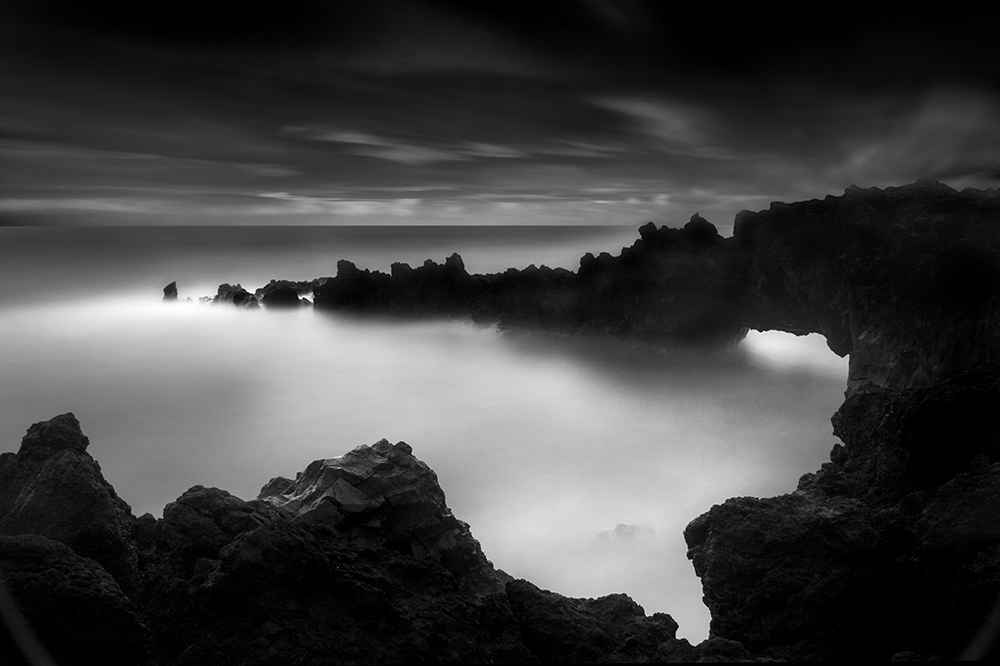
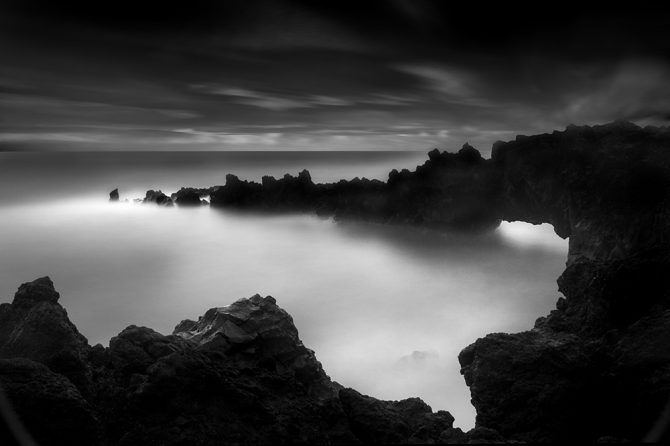
My latest newsletter features five new images from Hawaii.
I also discuss the challenges of photographing while on vacation.
You can sign up here:
http://www.colethompsonphotography.com/newsletter/
Or view the newsletter here:
Newsletter with New Images from Hawaii
Thanks!
Cole
August 22, 2014
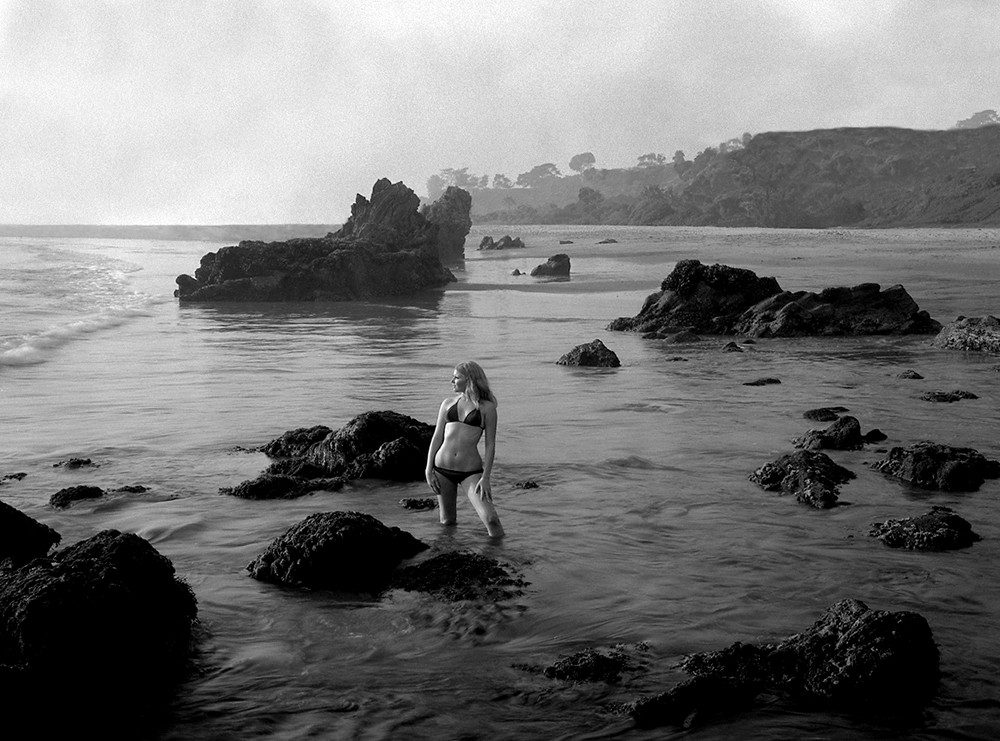
Mary, 1971 – This is my friend from school, Mary Doyle, at Corona Del Mar in California. I created this image with one of my favorite cameras from my youth, a mini-Speed Graphic with a 220 roll back.
1. A wonderful childhood. Beginning at age 14 and for the next several years, photography became my life and I spent every moment either photographing, working in my darkroom or reading about photography.
I have such wonderful memories of those long days working in the darkroom, experimenting and the thrill of discovery.
Two Hippies, 1970 – This was created at my high school, Loara in Anaheim, CA. This was created at the height of the hippy movement, which along with the drug scene was very much alive at my high school.
2. Balance. I chose not to pursue a career in photography for fear I would lose my passion for it, and instead went into business. Unfortunately, due to the demands of family and job I did not pick up the camera for the next 30 years.
My business life was all about numbers, logic and rational decision making, and with no creative outlets my life became lopsided. It was not until I returned to photography in 2004 that I realized how out of balance my life had become.
Photography and the creative process helped bring balance back into my life.
Wooden Indian, 1971 – I worked at Disneyland and this image was created on Main Street. This statue is still standing there today and every time I see it, it conjures up great memories of my youth, photography and working at Disneyland. Ironically I now work in downtown Fort Collins, the downtown that inspired Disney’s Main Street.
3. The Ability to see. Photography has helped me to see beauty in the ordinary and find uniqueness in the common. That makes every location, exotic or not, exciting.
Old Shoes, 1971 – This is a shoe locker at my High School. I had just moved to Anaheim from Rochester, NY and being new, my eyes were fresh and saw everything for the first time. It was a very productive two years because of the encouragement of a dear friend and mentor, John Holland.
4. Vision. Through photography I found my Vision, or my unique way of seeing the world. What I see through my Vision is much different than what I see with my eyes.
My Vision is what fuels my creative process.
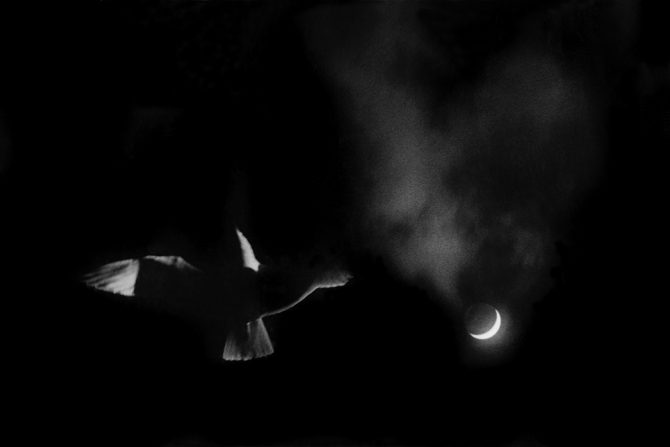
5. Confidence. Finding my Vision and learning to follow it taught me that I didn’t need another persons approval to feel good about my work or myself as an artist.
I’ve learned that if I love my work, that is enough.
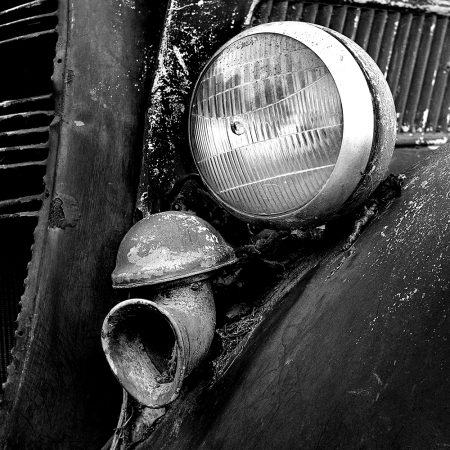
Headlamp, 1970 – This old truck sat in a field across from my High School in Anaheim. I consider this my Edward Weston period, a time when I was mesmerized with his work and tried to copy it.
I thought about adding a sixth item: Purpose. But as I thought about it, I realized that photography is not my purpose in life.
Rather, photography makes my life better and that helps me to fulfill my real purpose in life.
Cole
P.S. The images in this post were created when I was 14-17 years old. These images are like a time machine, transporting me back to those wonderful days when I was young and always had a camera around my neck.
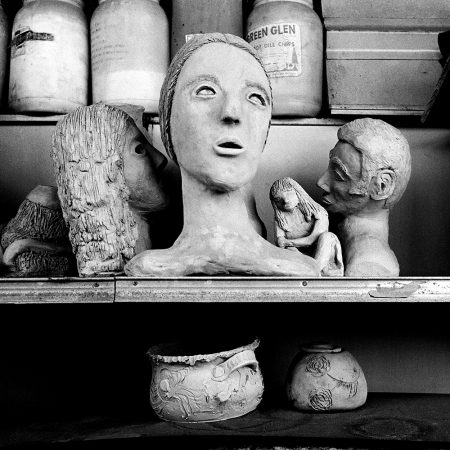
Clay Figure, 1971 – Student projects at my high school.
Artist, 1970 – This portrait artist worked at the Disneyland Hotel shops.
Old Building, 1971 – An old farm shed in Anaheim.
Egg in Glass, 1968 – I was 14 and I had purchased a used Pony 828 camera. I removed the lens mount so that I could focus more closely, and using a ground glass on the film plane, composed this image. I tell people that this was my first “fine art” photograph!
Thousand Steps No. 2 – This was photographed at 1000 steps in Laguna Beach, CA. Many, many fond memories were made here.
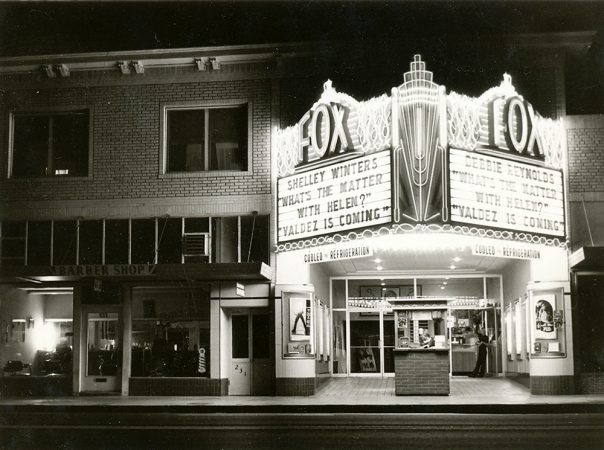
The Fox – Downtown Anaheim, where I spent many hours visiting Val and Vic’s Camera Store and photographing.
August 3, 2014
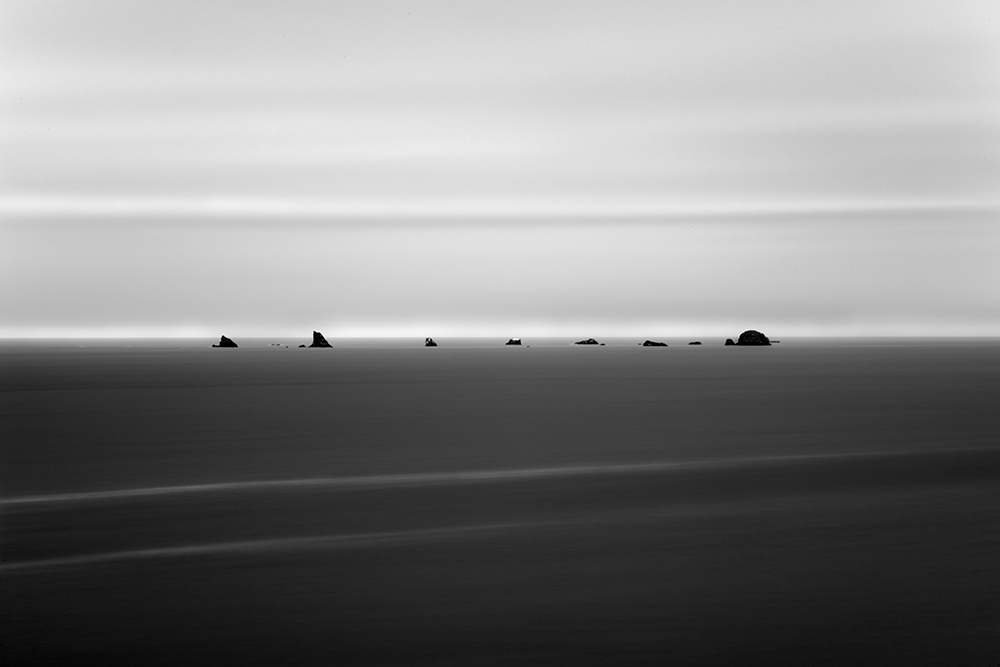
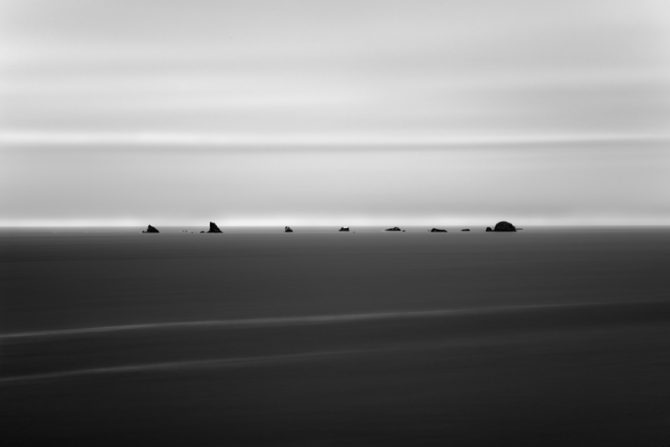 Monolith No. 27
Monolith No. 27Here are two new short video tutorials that have been released by my friend Greg McKean over at Master Photo Workshops. These are a part of a larger comprehensive DVD tutorial we are putting together on how to shoot long exposures.
Shooting a 30 Second Exposure with the Singh-Ray Vari-ND and Mor-Slo 5 Stop ND Filter:
https://www.youtube.com/watch?v=rbepMMhVc7w
Fixed Vs. Variable Filters
https://www.youtube.com/watch?v=BQE2kxONJds
The other DVD we were working on, which is about how I create in black and white on location in Death Valley, is nearing completion.
Cole
July 11, 2014
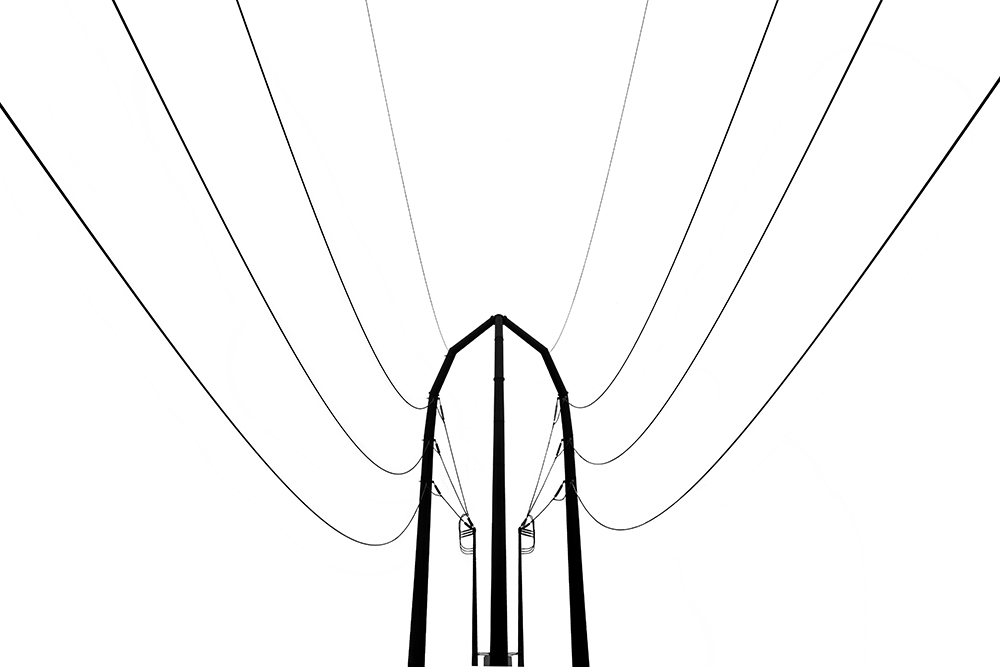

Minneapolis Power Lines
People often ask me if I would look at their work and critique it. And while I would love to accommodate, I am uncomfortable critiquing another person’s work and here’s why:
First, I’m unqualified. All I know is what I like and what I don’t like, and that should be irrelevant to you. Many think that because I create images they admire, this qualifies me to comment on their work, it does not. I am only qualified to judge my own images.
Second and most importantly, I believe that your opinion about your work should be the only one that matters. Your opinion is more important than mine or any other and it is the only one that can help you achieve true satisfaction from your work.
I used to ask others about my work, but in truth I was really looking for validation. I wanted the person to say “these are wonderful images, you are a wonderful photographer.” But even if they said those words, it didn’t make it so. Perhaps they were just being kind, and even if they were sincere, it was still just their opinion.
At the end of the day I need to respect and love my images and If I don’t, then it doesn’t matter how many people tell me that my images are wonderful.
How do you learn to trust your opinion over others? I think it starts with having a Vision of your work. Once you know how your images should look, then it becomes irrelevant what others think. Having a Vision of your work gives you great purpose and confidence.
When you don’t have that Vision, then the opinion of others is the only tool you have to gauge your work. And because you can never please everyone: true satisfaction can never come because you are subject to the changing whims and fancies of public opinion.
People frequently tell me what’s wrong with my images or what I should have done differently, but it doesn’t phase me. I know what I was trying to accomplish and only I know how close I came to fulfilling that Vision, they do not.
Tonight I was printing a copy of The Angel Gabriel and as I held the image in my hands I thought: this is beautiful, I love this image.
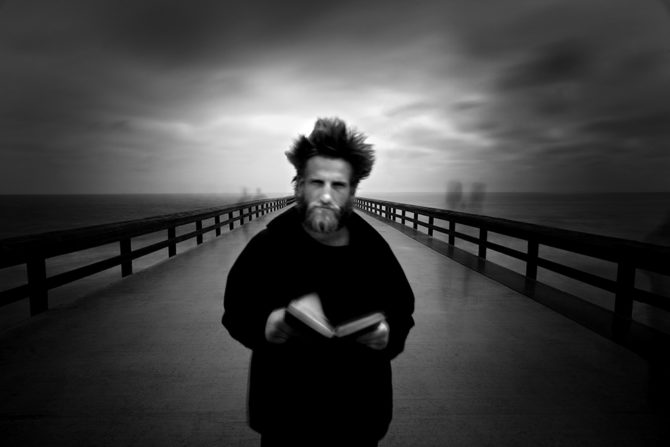
That satisfaction cannot come from another telling me how wonderful the image is, and it cannot be taken from me even if the image is unpopular.
My opinion is the only one that matters to me, and yours should be the only one that matters to you And that is why I don’t critique other’s images.
Cole
July 4, 2014
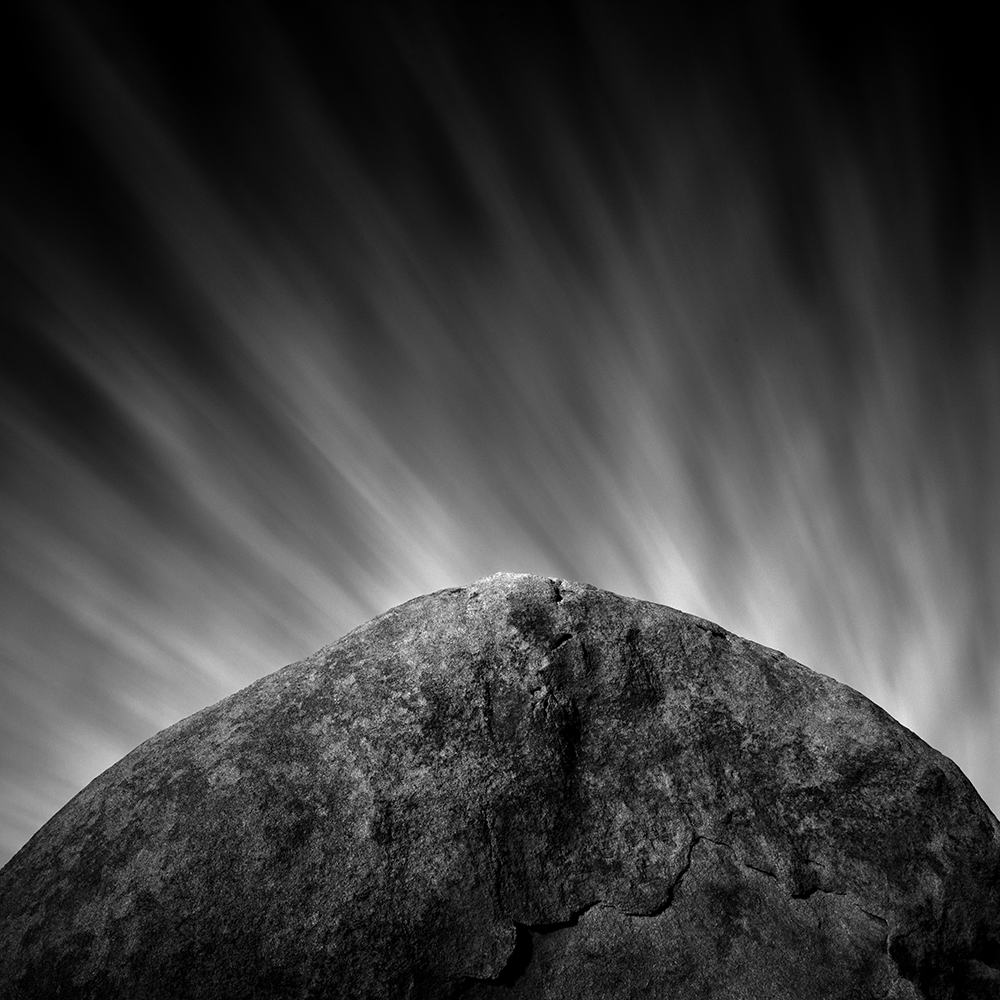
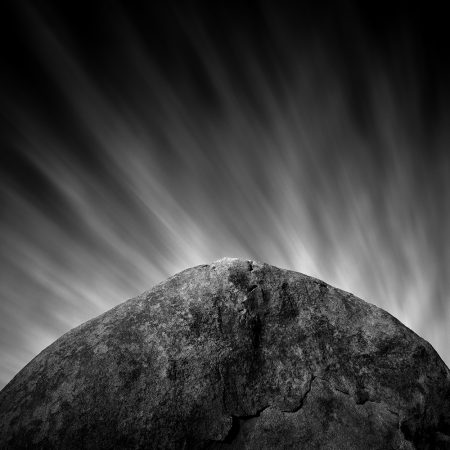
I was exhibiting my “Ancient Stones” portfolio when someone approached.
We both stood there looking at the images when he said: “You just cannot do b&w work like this with digital!”
I didn’t have the heart to tell him, but thought of this anecdote:
“A photographer went to a socialite party in New York. As he entered the front door, the host said ‘I love your pictures – they’re wonderful; you must have a fantastic camera.’ He said nothing until dinner was finished, then: ‘That was a wonderful dinner; you must have a terrific Stove.'” Sam HaskinsJune 28, 2014
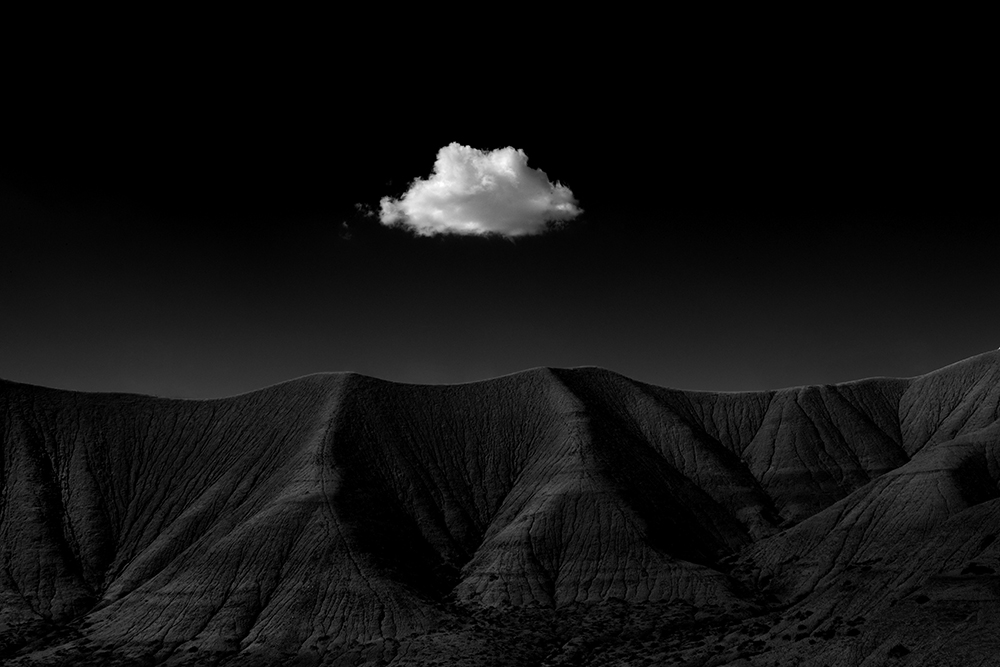

Harbinger No. 1
Several summers ago my son Jem and I were taking a road trip through the western states, it was meant to be both a photography trip as well as a father and son trip. We were in Utah and it was about 150 degrees (or so it felt) when I spied these great mud hills off to the north.
Sensing a good image, we hiked to a vantage point where I could photograph this set of wonderfully symmetric hills. I loved the dark mud and the deep blue sky, but the image was lacking something. I wanted to stay longer to see if I could solve this photographic riddle, but my son had other ideas.
Photographing with a child is a real challenge for me. I go into “working mode” which means that I withdraw into my own world and want to be left alone. My son on the other hand goes into “bored child mode” which means he repeats the following, interspersed with loud sighs:
It’s hot.
How much longer?
Can we go now?
You said 5 minutes…5 minutes ago!
Can I go back to the car and watch a movie?
Are you done?
Given the mediocrity of the image, the oppressive heat and my son chipping away at my stamina…I gave up, packed up and headed back to the truck.
But once back I spied this single cloud moving very fast across the horizon. I could see by its trajectory that in about a minute it would pass right over those mud hills that I had just been photographing.
This was a beautiful little cloud that was heading towards a wonderful setting…when suddenly I realized that this could be my “Moonrise, Hernandez” moment!
I told my son that I was going back for one more shot (he let out a loud and exaggerated groan) and I ran just as fast as I could. I quickly set up my gear and was able to get a single shot with the cloud perfectly situated above those mud hills. And that is the image above.
As I looked at the image on the camera’s screen, the name Harbinger immediately popped into my head and that is what I named the image.
When I would show this new image to people, they would ask “are you going to do a series of them?” I honestly didn’t think I’d ever find another solitary cloud like this one and would say that while I would love to, I doubted that it would be possible.
But over the next couple of years something interesting happened. Being sensitized to this concept, I started to find other Harbinger opportunities until I had a small collection of them:
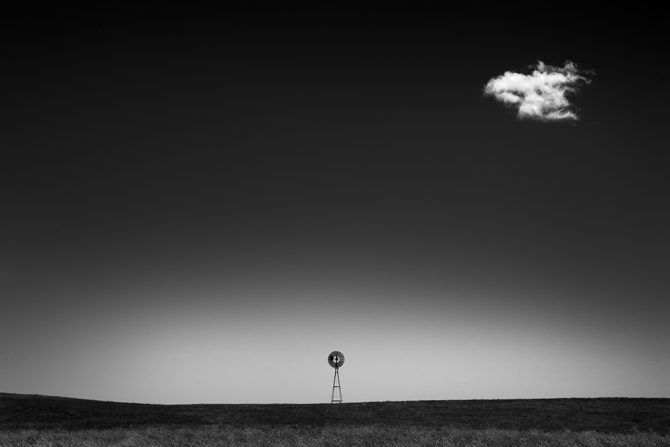
I love this series for its mysterious simplicity, and I love the artist statement for its brevity and ambiguity:
Harbinger: \?här-b?n-j?r\ noun
Unlike my Auschwitz-Birkenau series that took just under two hours to create, I expect Harbinger to take many years to complete.
But that’s okay, I’m in no hurry.
Cole



